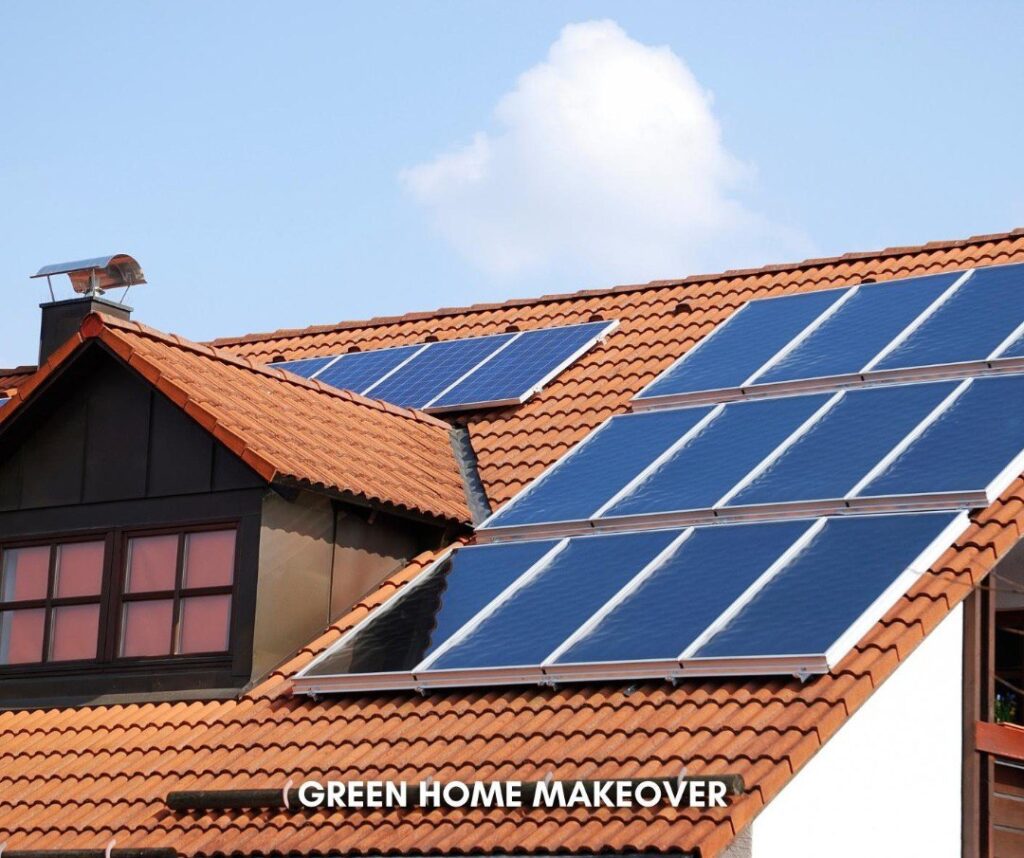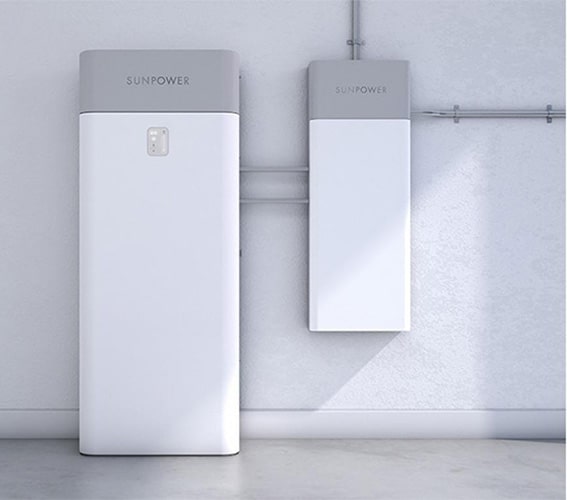The Best Ultimate Guide to Solar Inverters 2023
If you’re thinking about making the transition from grid electricity to a solar power system, you might be wondering about the purpose of solar panels and inverters, how to install them and how solar inverters work?
That’s why at Green Home Makeover we’ve put together this guide to commercial and residential solar inverters, covering everything from purpose, to components and installation, in order to answer any questions you might have.

What Are Solar Inverters?
Inverters are essential pieces of equipment within solar installations. They take the solar energy captured by photovoltaic modules (also known as solar panels) in the form of direct current (DC) and convert it to alternating current (AC).
This conversion is necessary for your solar energy system to serve its purpose, as alternating current is the usable form of electricity that runs our homes and businesses.
What types of inverters are used in residential solar installations?
1. Stand-alone Solar Inverters
Also called an on off-grid solar inverter, these inverters are designed to work on their own, without being connected to the utility grid. They usually charge batteries with AC voltage, to be used outside of daylight hours.
They convert the DC voltage in batteries that have been charged by solar panels to AC voltage to be used in your home, without any interaction with the electrical grid.
2. On Grid Solar Inverters
Also known as a grid tie inverter, this type of solar power inverters is connected to the local utility grid, and feeds excess solar power into it.
On grid solar inverters will automatically shut down upon grid supply loss, for safety reasons, and it will not work during a power outage.
3. Special Battery Backup Solar Inverters
This type of inverter recharges a solar battery from backup AC supply, via an onboard charger, and feeds excess generated electricity into the local utility grid. Special battery backup solar grid tie inverters are able to feed the load with electricity during a power outage.
4. Hybrid Solar Inverters
A hybrid solar inverter allows excess energy to be stored in a solar battery system for later use. It is also connected to the grid and will feed in electricity once the solar battery is full.
Hybrid solar inverters are able to manage stand-alone, battery backup and on-grid solar inverter functions.

How Long Does a Solar Inverter last?
According to EnergySage, a typical centralized residential string inverter will last around 10 to 15 years. Given that solar panels can have a life expectancy of up to 40 years, you’ll likely have to replace your inverter once or twice. The average warranty on a string inverter can be up to 10 years.
What are the components of a Solar Inverter?
Solar inverters have three prime functions:
- Switching
- Filtering
- And control of amplitude and frequency
A Maximum Power Point Tracker (MPPT)⁴ may also be used, to optimize the match between your solar panels and the utility grid. Below are listed some of the key components of any solar inverter.
Transistors
Field effect transistors, also known as FETs or mono-polar semiconductors, are a type of transistor that uses an electric field to control the flow of current in a semiconductor.
They are involved in the switching function of solar inverters. Insulated-gate bipolar transistors are used as an alternative to field effect transistors in some designs.
Triacs
Triacs are semiconductor devices that, along with the field effect transistors, are used in the process of switching medium power AC. They are able to switch high voltages and high levels of current, and can switch both halves of the alternating cycle.
Capacitor
The capacitor is used for filtering of the DC bus that comes from the semiconductors switching. It also keeps a stable voltage on the DC bus, as well as reducing losses between the solar panels and the grid tie solar inverters.
Microcontrollers
Microcontrollers are used for the control phase, which involves sine wave pulse width modulation of energy at high frequencies, to allow a pure sine wave output.
It is sampled, rectified and fed back to the control circuitry, which regulates the amplitude, frequency and phase.
Display
Your solar inverter display relies on monitoring software to tell you things such as:
- How many hours the solar power system has been producing electricity.
- The amount of energy in kilowatt hours that the solar power system produces on a daily basis.
- The amount of energy that the solar power system has produced since installation.
- And the number of kilowatts that the solar power system is currently producing.
Installation
1. Step One: Location of Your Solar Inverter
Prior to installation, you need to pick a suitable location for the solar inverter to be placed.
- It should be beyond the reach of direct sunlight, as this could cause overheating and will reduce its lifespan.
- It should be well ventilated, with space for air circulation on both sides of the panel. Ventilation is important for preventing overheating, even if your inverter has a fluid coolant.
- Make sure that your solar inverter is sheltered from the elements, and in a place that is low in moisture. Rain, humidity, high moisture or high temperatures will all shorten the lifespan of your inverter.
- The location should be accessible, for the purpose of maintenance and inspection. The location should, however, be secure, so that there is no risk of electric shock.
- There needs to be at least 1.7ft of space between your inverter and the ground or the ceiling. You should also make sure that your wall is strong enough to hold its weight.
2. Step Two: Mounting Your Solar Inverter
Once you have picked a suitable location for your inverter, you can go ahead with the mounting. If you are installing two inverters, you need to ensure there is enough space between them. The inverter should be mounted with four screws, so that it is secure.
3. Step Three: Connection To Solar Panels
Once you have mounted your inverter, it is ready to be connected to your solar panels. Make sure that you have turned off the main switch before connecting your inverter.
4. Step Four: Connection To The Grid
The AC miniature circuit breaker should be disconnected before you carry out this step. The AC connection cables should be carefully guided into the inverter, and the grounding conductor needs to be connected to the grounding terminal.
The terminal block for the AC connection should be plugged in the AC-out slot in the inverter.
Pros & Cons Of DIY Installation Of Your Solar Power System
Advantages of DIY Solar Installation
The biggest advantage of doing a DIY solar installation is the money you can save. You could even build your own solar inverter, suited for your needs.
Doing it yourself will also be a great learning process, and the knowledge that you acquire would be of use in the future when it comes to maintenance, repairs or new products.
Disadvantages of DIY Solar Installation
Installation of a solar energy system requires a great deal of technical know-how, and you will need to invest a lot of time fixing it properly for the safety of your devices and how to know the best types of solar inverters.
You will also need some specialist tools, and would need to learn how to use them correctly. Each of these tools come with their own set of safety rules.
For safe installation, you will have to follow several safety precautions before fixing it. If you lack prior experience, you will have to read through the manual thoroughly – this is not a step that should be skipped.
The Solution: Hire Solar Installers
While it is entirely possible to successfully install a solar power system by yourself, without prior experience, is very time-invasive and, if you have no prior experience with electrical systems, there are a lot of potential risks involved.
Luckily for you, Green Home Makeover is here to help. We work with teams of highly skilled solar installers across Illinois, to make sure that you have the best quality service and have a solar system that is secure, safe and efficient.
If you are thinking of upgrading your home to solar and would like a free, no-obligation consultation, contact us today.
If you are interested in learning more about solar energy, check out our article Solar Energy in 2022: All Your Questions Answered.
Read more: https://greenhomemakeover.com/solar-energy/
- https://www.energy.gov/eere/solar/solar-integration-inverters-and-grid-services-basics
- https://news.energysage.com/how-long-do-solar-panels-last
- https://www.pv-magazine.com/2022/10/03/how-long-do-residential-solar-inverters-last-2
- https://nypost.com/dispatch/bluetti-unveils-new-solar-power-battery-storage-system-ep600